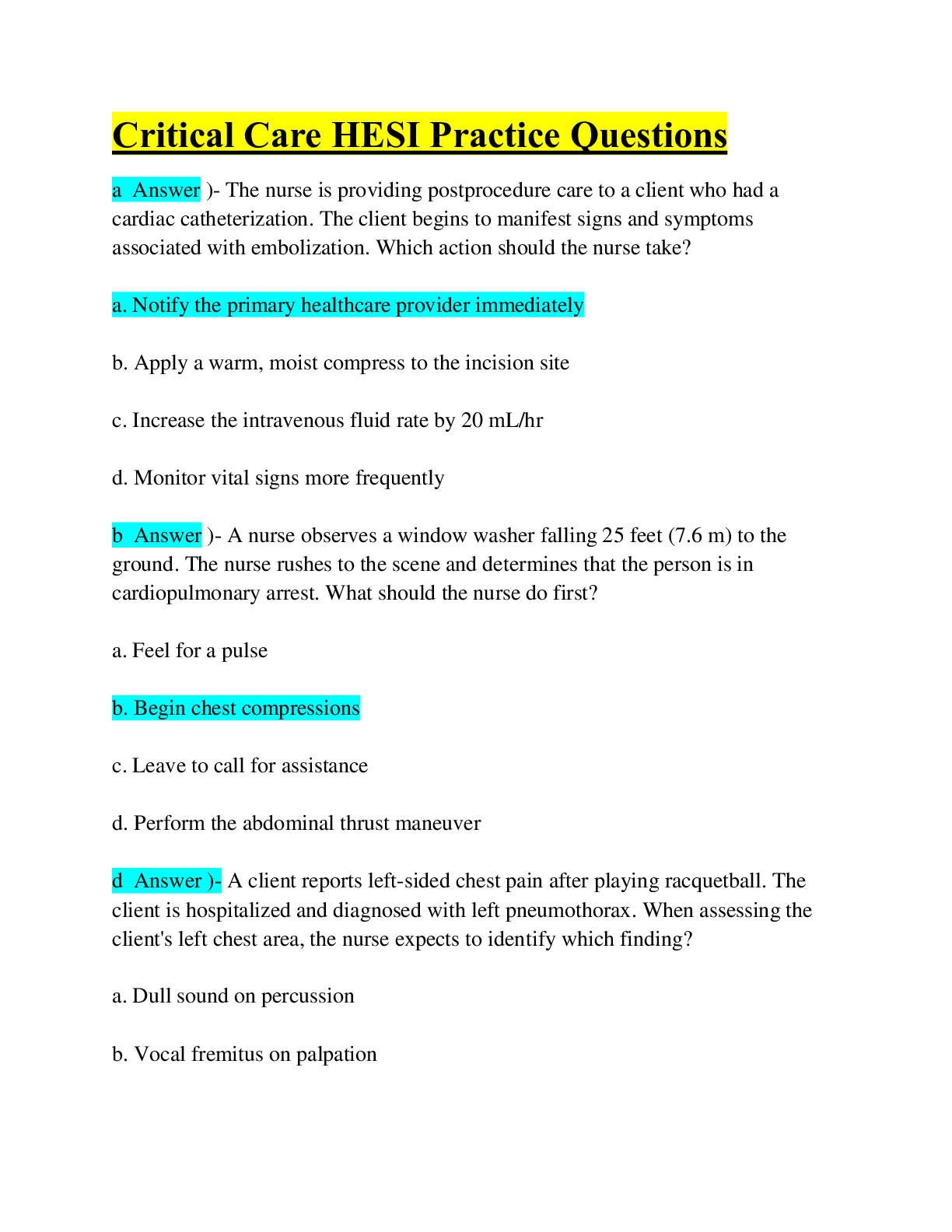Health Care > EXAM > DOT Exam :DOT Certification Exam: Questions & Answers: Guaranteed A+ Score (All)
DOT Exam :DOT Certification Exam: Questions & Answers: Guaranteed A+ Score
Document Content and Description Below
An unrestricted Commercial Motor Vehicle Driver Medical Certificate must be renewed (Ans - Every Two Years A driver presents with history of an isolated TIA 6 months ago. He has a return to work l... etter from his primary care provider (PCP) and neurologist. He is taking and tolerating well hydrochlorothiazide and simvastatin. All other aspects of the exam and history were normal. What should the medical examiner do next? (Ans - Disqualify driver for now FMCSA regulates interstate commercial operation including the (Ans - Driver, Vehicle, and Motor Carrier During the CMV exam a driver perceived a whispered voice at 5 feet in his left year and 4 feet in his right year. Exam was otherwise normal. What do you do as the medical examiner? (Ans - Certify driver for 2 years Which of the following is an assessment of L4 nerve root pathology? A. Plantar flexion B. Patellar reflex C. Hip extension D. Babinski reflex (Ans - Patellar reflex A driver presents for medical exam and reports being a smoker and having frequent shortness of breath. What do you do next? (Ans - Order a spirometer test According to regulation, which of the following must be evaluated as part of the eye exam? A. Pupil reaction B. Iris symmetry C. Conjunctiva injection D. Tonometry pressure (Ans - Pupil reaction Continued certification of NRCE Medical Examiners requires which of the following? A. Periodic training at least every five years B. Completion of recertification test every five years C. Completion of certification test every 10 years D. Electronic transmission to FMCSA CMV Medical Examination Results at least monthly (Ans - Periodic training at least every five years, Completion of certification test every 10 years, Electronic transmission to FMCSA CMV Medical Examination Results at least monthly A driver presents for recertification. The only condition he lists is GERD, for which he takes OTC omeprazole. He says that when he is driving and eating fast foods, he is more likely to have heartburn than when off‐duty. You should (Ans - Correlate history with abdominal exam Which of the following findings is disqualifying? A. Oxygen saturation 90% B. LVEF 40% C. FEV 68% predicted D. All of the above (Ans - Oxygen saturation 90% The driver presents for recertification and submits an ultrasound report indicating an abdominal aortic aneurysm from two months ago, shortly before he had surgical correction. He has surgical clearance and says he is doing well, has no symptoms. You should (Ans - Inform the driver of the 3 month waiting period before he can be certified The driver takes diphenhydramine twice a day to treat nasal congestion. What must you document in order to certify? (Ans - Cannot drive within 12 hours of taking diphenhydramine The driver has a history of carpal tunnel repair of her right hand 2 months ago. Her grip strengths are symmetrical and strong. What is necessary in order to qualify this driver? (Ans - Document her findings for 2‐year certification Which of the following abdominal complaints is most likely to be incapacitating? A. IBS B. GERD C. Urinary tract infection D. Nephrolithiasis (Ans - Nephrolithiasis The waiting period for benign positional vertigo is (Ans - 2 months The driver's BP is 148/96. You verify her history, which indicates she has no prior history of hypertension. If otherwise qualified, you may certify her for (Ans - 1 year The driver's current BP is 135/76. Your records indicate at history of Stage III hypertension 4 years ago. The maximum certification for this driver is (Ans - 6 months The driver presents for examination with a recent history (five weeks ago) of pneumothorax. He has no prior history of pneumothorax. In order to be considered medically qualified, his forced vital capacity (FVC) should be greater than (Ans - 65% The recommended waiting period (WP) and certification period (CP) for a driver following surgical correction for intermittent claudication are (Ans - WP 3 months, CP 1 year Which of the following are disqualifying? A. Pacemaker B. Implanted defibrillator C. Both a and b D. Neither (Ans - Implanted defibrillator Five years post‐CABG, the driver must provide a copy of _________ in order to qualify for recertification (Ans - ETT The driver has a 5‐year history of asthma, described as "well‐controlled". He carries rescue inhaler for the times when he becomes short of breath, but says this is rare. He provides pulmonary functions performed last week and his FEV1 is 62% of predicted and his Pa02 is 62 mm. You should (Ans - Disqualify and recommend that he return to his personal provider What is the Primary mission of FMCSA? (Ans - To promote the safety of the roadways. During a driver's history, she describes her role and responsibilities as limited to the driving component and excluding strenuous activities. You should (Ans - Conduct the full and standard physical examination During the examination, a driver reveals, "I had a touch of sugar" two years ago, but stopped taking the prescribed medication when it ran out, the name of which was forgotten. Driver did not indicate "yes" on the medical history for diabetes. The examination and urinalysis are unremarkable. What is the appropriate action you would take to complete this examination? (Ans - Correct the medical history in your narrative and discuss the signs, symptoms and health impact of diabetes and the need for regular follow‐up in certifying the driver Which of the following are disqualifying? A. Pacemaker B. Implanted defibrillator C. Both a and b D. Neither (Ans - Implanted defibrillator Five years post‐CABG, the driver must provide a copy of _________ in order to qualify for recertification (Ans - ETT The driver has a 5‐year history of asthma, described as "well‐controlled". He carries rescue inhaler for the times when he becomes short of breath, but says this is rare. He provides pulmonary functions performed last week and his FEV1 is 62% of predicted and his Pa02 is 62 mm. You should (Ans - Disqualify and recommend that he return to his personal provider What is the Primary mission of FMCSA? (Ans - To promote the safety of the roadways. During a driver's history, she describes her role and responsibilities as limited to the driving component and excluding strenuous activities. You should (Ans - Conduct the full and standard physical examination During the examination, a driver reveals, "I had a touch of sugar" two years ago, but stopped taking the prescribed medication when it ran out, the name of which was forgotten. Driver did not indicate "yes" on the medical history for diabetes. The examination and urinalysis are unremarkable. What is the appropriate action you would take to complete this examination? (Ans - Correct the medical history in your narrative and discuss the signs, symptoms and health impact of diabetes and the need for regular follow‐up in certifying the driver [Show More]
Last updated: 2 years ago
Preview 1 out of 35 pages

Buy this document to get the full access instantly
Instant Download Access after purchase
Buy NowInstant download
We Accept:

Reviews( 0 )
$8.00
Can't find what you want? Try our AI powered Search
Document information
Connected school, study & course
About the document
Uploaded On
Jun 08, 2023
Number of pages
35
Written in
Additional information
This document has been written for:
Uploaded
Jun 08, 2023
Downloads
0
Views
141


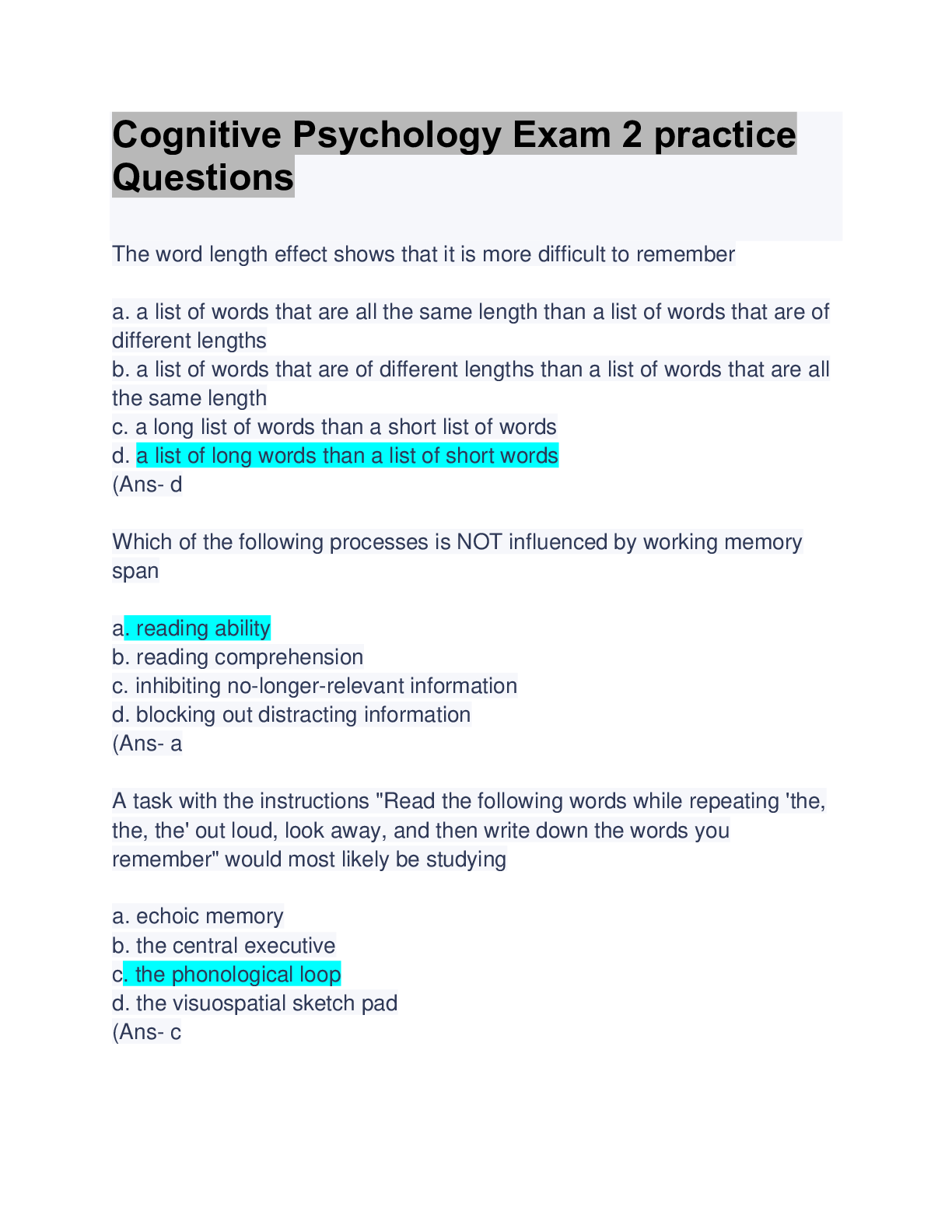
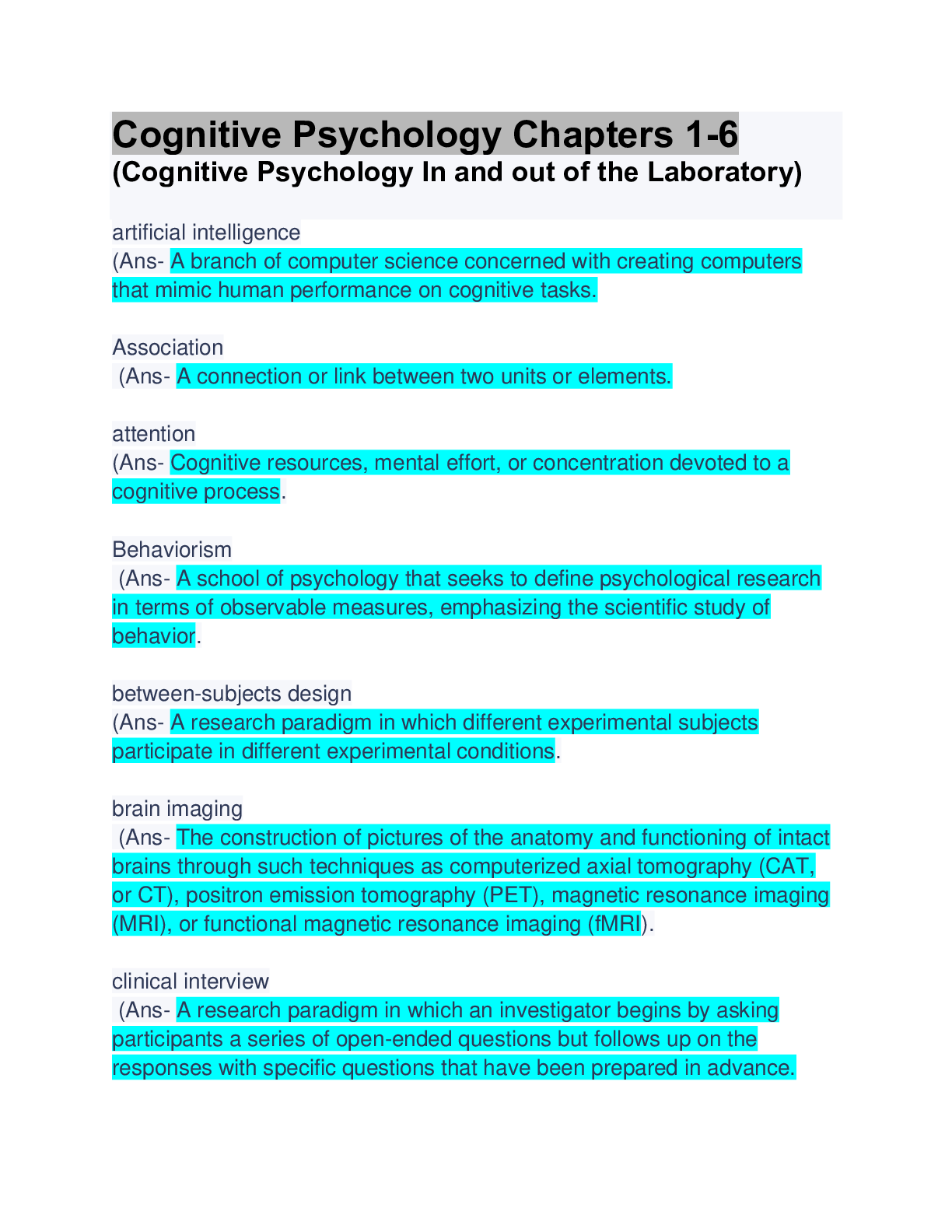




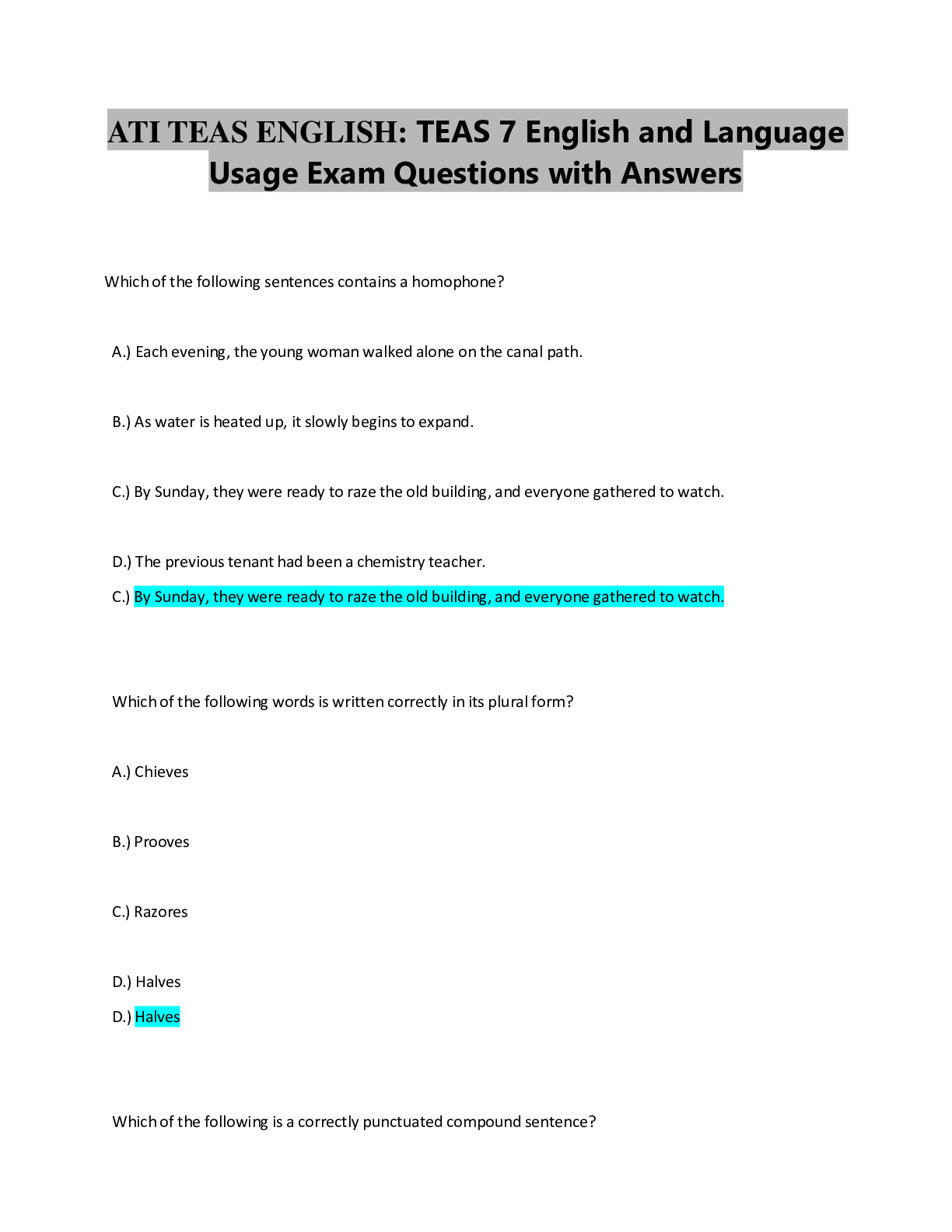








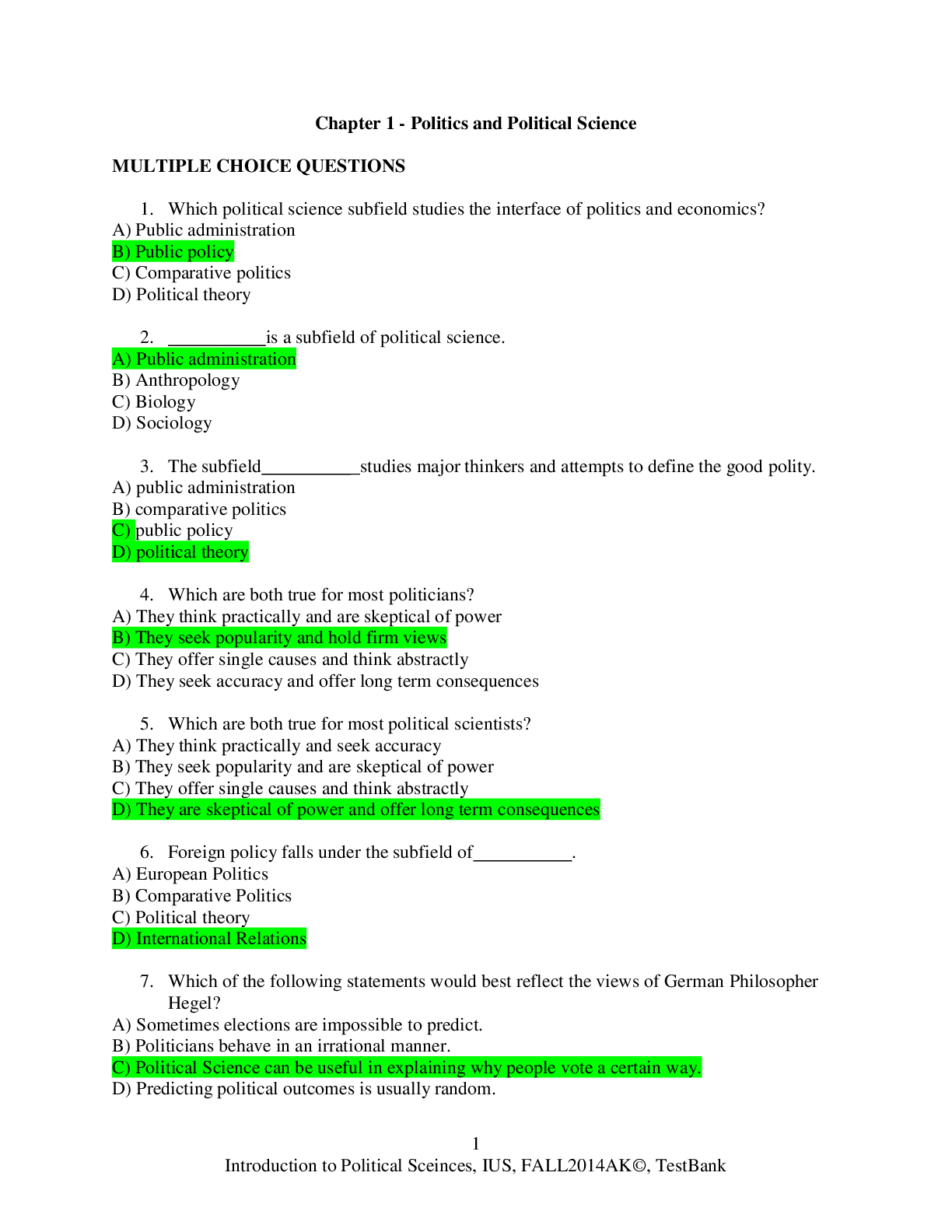
.png)
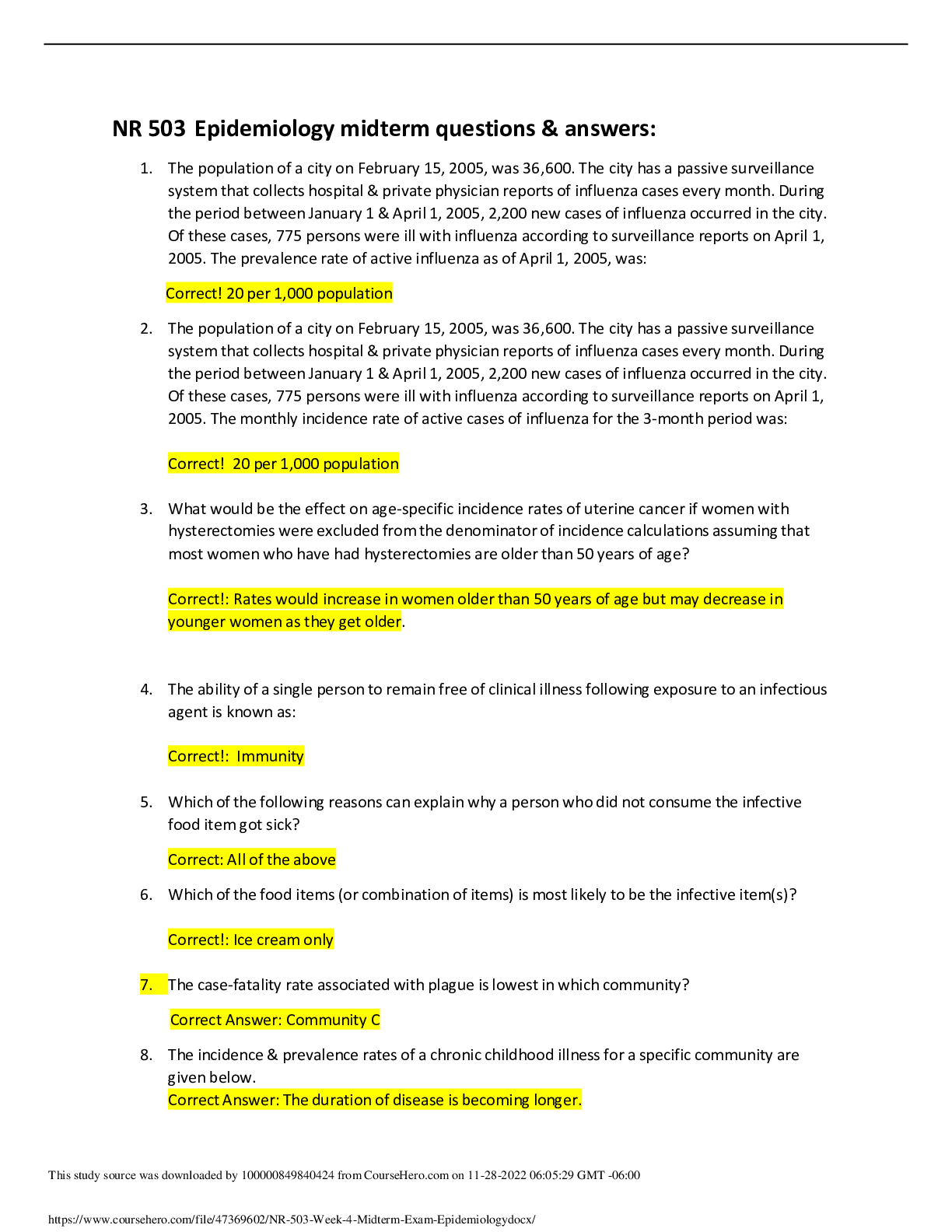


.png)

